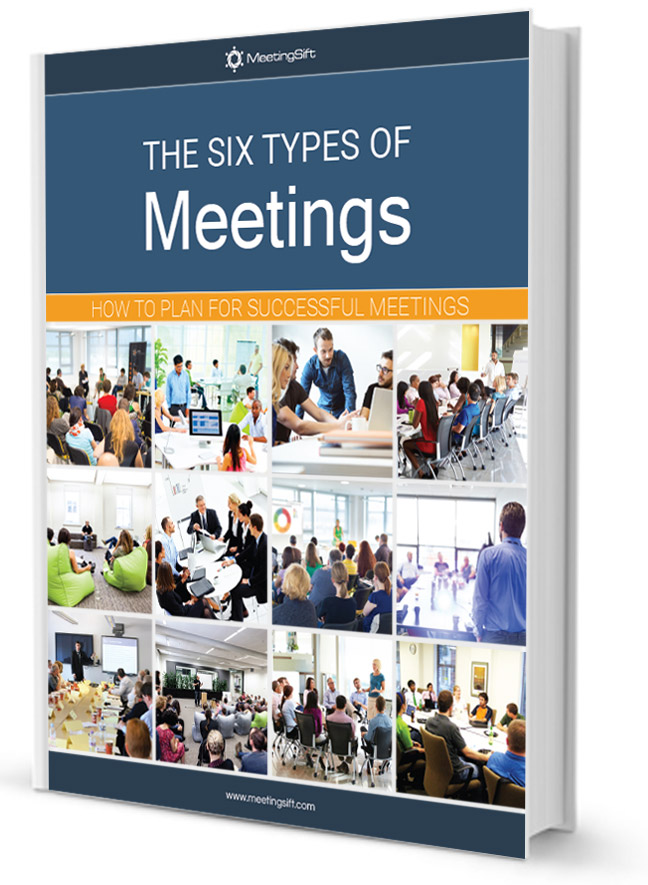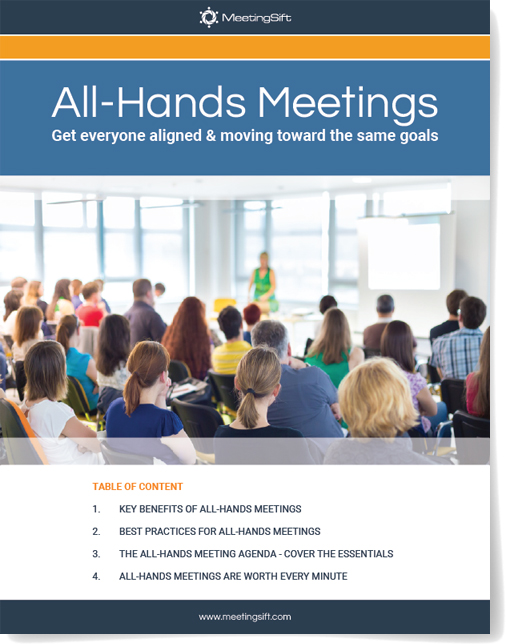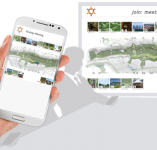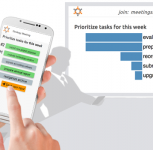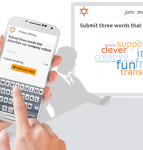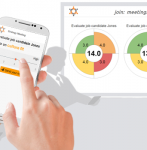Presentations, panel debates, keynotes, workshops, and lectures are all examples of information sharing meetings. The primary goal of these meetings is for the speaker to share information with the attendees.
At information sharing meetings attendees have historically been passive listeners. With new interactive technologies, taking advantage of personal smart devices and cloud computing, attendees can easily be engaged with the speaker and the subject in a variety of ways. This takes attendees from passive spectators to active participants, making the meeting more engaging, enjoyable, and effective for all.
Primary Goals for Information Sharing Meetings
 Depending on the setting, there are several goals that would lead you to choose an information sharing meeting format. Sometimes the presenter is presenting information in order to persuade the group, while other times the intention might be more educational.
Depending on the setting, there are several goals that would lead you to choose an information sharing meeting format. Sometimes the presenter is presenting information in order to persuade the group, while other times the intention might be more educational.
Meeting goals may also differ based on the content and provider of information. Often the setting is a larger group, like a conference or a panel discussion audience, where the primary goal is to educate the audience on a topic relevant to them. Other times the setting is smaller groups, like workshops and training sessions.
Key Roles in Information Sharing Meetings
While there are several types of information sharing meetings, they usually feature two main roles: the presenter(s), and the audience members.
Presenter
Often, the presenter is in a position of authority, like a manager passing on information or instructions to subordinates, or a subject matter expert sharing her knowledge with those present. The role can also fall on a keynote speaker, members of an panel, or project leader, to name just a few.
Audience members
Audience members make up the bulk of participants in information sharing meetings. Depending on the meeting size, there may be as many as hundreds, or even thousands, of audience members present. Their level of interest, and motivation to absorb the information shared, is highly dependent on their motivation for attending. In some cases they have chosen to attend out of their own interest, while in other cases they are required to attend by their employer, professor, or other authority.
Challenges in Information Sharing Meetings
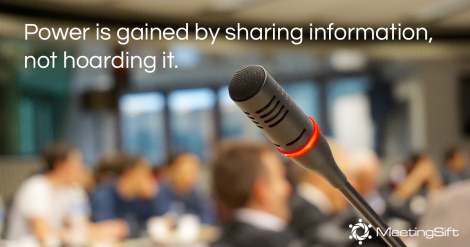 The biggest challenge in information sharing meetings is to keep audience members engaged and involved throughout the presentation, so they take in the information being shared and learn from it. Various techniques and technologies can be used to engage and involve audience members in a presentation. Another key challenge is finding the proper dynamic between presenter and audience. Often, there can be a disconnect between the two. This can be caused by the presenter not knowing enough about his or her audience, causing issues like presenting content that is either too complex or too basic, or focusing on issues that are less interesting to the audience, while not going in depth on the issues that truly interest them. This disconnect can cause the audience to become disengaged and bored, which in turn frustrates the presenter.
The biggest challenge in information sharing meetings is to keep audience members engaged and involved throughout the presentation, so they take in the information being shared and learn from it. Various techniques and technologies can be used to engage and involve audience members in a presentation. Another key challenge is finding the proper dynamic between presenter and audience. Often, there can be a disconnect between the two. This can be caused by the presenter not knowing enough about his or her audience, causing issues like presenting content that is either too complex or too basic, or focusing on issues that are less interesting to the audience, while not going in depth on the issues that truly interest them. This disconnect can cause the audience to become disengaged and bored, which in turn frustrates the presenter.
How to Host Great Information Sharing Meetings
Old fashion information sharing meetings, where the presenter does all the talking and the audience is passively listening, are only successful if the presenter is a good speaker with a charismatic presence, or the audience is extremely interested in the information being shared. However, by engaging the audience and making the presentation dynamic, you increase the success of any information sharing meeting. Even something as simple as polling the audience on their interest in the topic, or adding a brainstorm activity where they can submit which words they associate with the topic, can help make the meeting much more engaging. Asking the audience to rank which issues they would like to hear more about, or having them suggest future topics and speakers, can provide valuable insight for planning the next meeting. This is true for all information sharing meetings, regardless of the content.
Engaging the audience
Without audience engagement, information sharing meetings can easily become boring and tedious. Involving the audience as active listeners by providing channels for them to ask questions and give feedback is an excellent way to make sure the group is engaged and paying attention. Audience members are often quite knowledgeable, or at minimum very interested, in the subject being presented. Taking advantage of the knowledge in the room, by collecting input and feedback, both engages the audience members and helps the presenter gain important information about the audience’s background and interests. Collected feedback also helps the presenter evaluate the effect of the meeting and identify improvements for future meetings.
Better Information Sharing Meetings with MeetingSift
MeetingSift offers a diverse collection of activities that can get your audience excited and engaged. Specially designed functionalities supporting moderated Q&A sessions, and interesting visualizations of audience input and feedback, informs the discussion and creates a dynamic dialogue between speakers and audience.
Engaging the audience
With MeetingSift’s activities, the job of the presenter becomes much more rewarding, and audience members are much more engaged, increasing the success of your information sharing meeting.
By gathering feedback from the group, the presenter can gain important information about the audience’s background and interests, as well as their response and feedback to the information being shared. Not to mention, using MeetingSift also keeps the audience members feeling that they are actively contributing and being heard.
Quickly and easily gather input from everyone
Audience members are often quite knowledgeable, or at minimum very interested, in the subject being presented. Take advantage of the knowledge in the room by collecting input and feedback.
MeetingSift lets presenters ask their audience relevant questions to the information being shared. This both engages the audience members and provides opportunity to systematically gather their input and feedback, which can help the presenter evaluate the effect of the meeting and improve future meetings.
Share engaging real-time results
When using MeetingSift to engage the audience you can display the results of their input in real-time, as dynamic visualizations. These visualizations are extremely enlightening, and can spur further discussion. The information can later be used to generate reports that can be shared with participants and other stakeholders.

 How to Run Successful Meetings
How to Run Successful Meetings 


